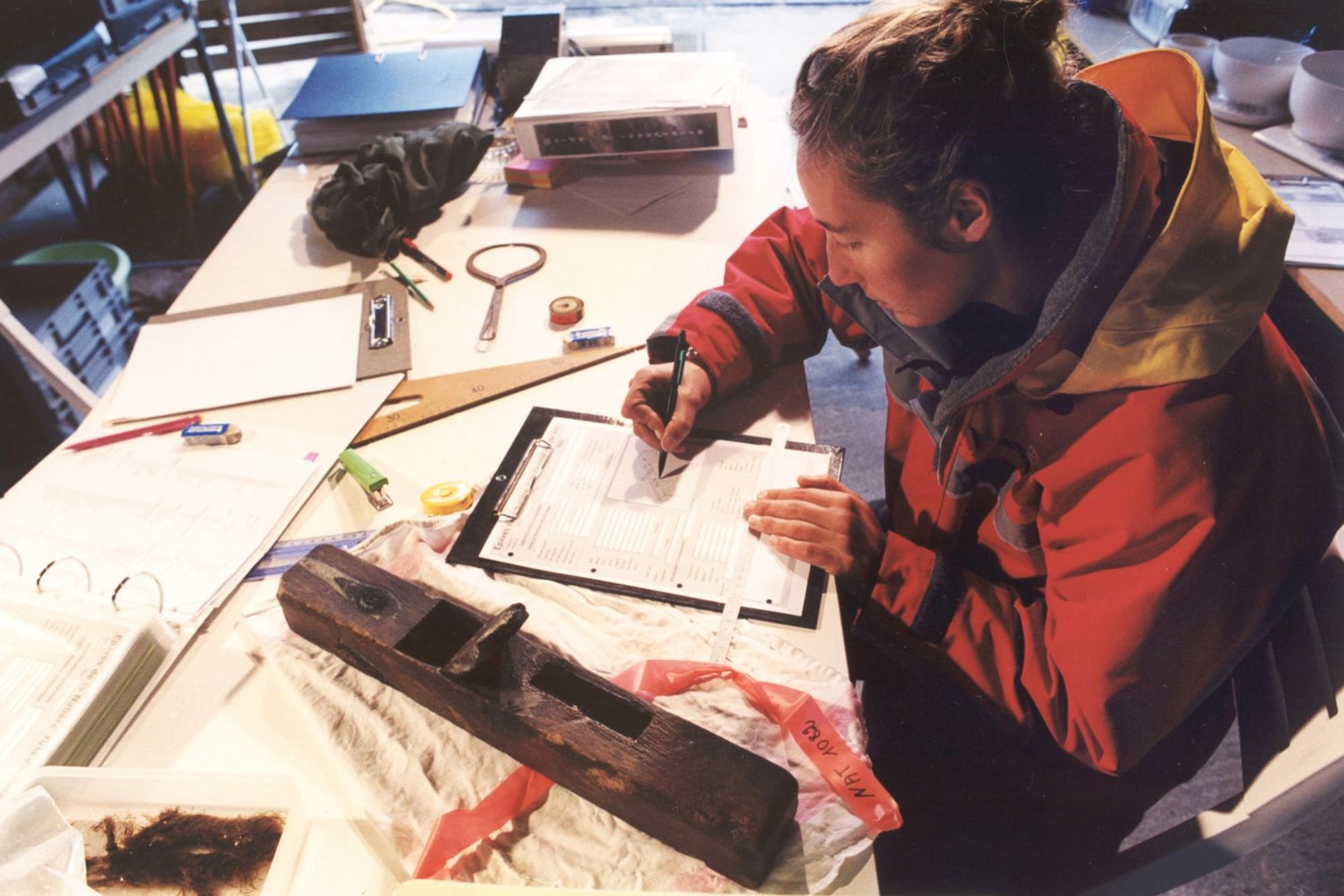
- Home
- Archaeological research
- Land-based processes
Back on land, the excavation's home base grew considerably during the first few years. The simple installations erected in 1999 for studying and preserving archaeological finds gave way, four years later, to a genuine base camp that included a large 45 sq. metre tent housing the various activities connected to storage, preservation, inventory and analysis. Under this arrangement, objects could be processed with a minimum of movement. In addition, it fostered an exchange of scientific, contextual and technical data about these objects. Photography and drawing were consigned to a 24 sq. metre prefabricated building, and archaeologists were given individual offices in large collective premises. This triple grouping was extremely beneficial: information could be easily transmitted between members of the team, and the working environment was both friendly and efficient.
In addition to excavation work, each of the team's permanent archaeologists spontaneously took charge of a specific area: inventory, management of underwater drawings, video footage, taking casts of the iron concretions, wood sampling, registration of dives, management of campaign notes, etc. There is no question that this exceptional versatility and involvement – over and beyond the scientific skills of each member of the team and the archaeological importance of the site – lent an extraordinary dimension to the excavation of the Natière site.










